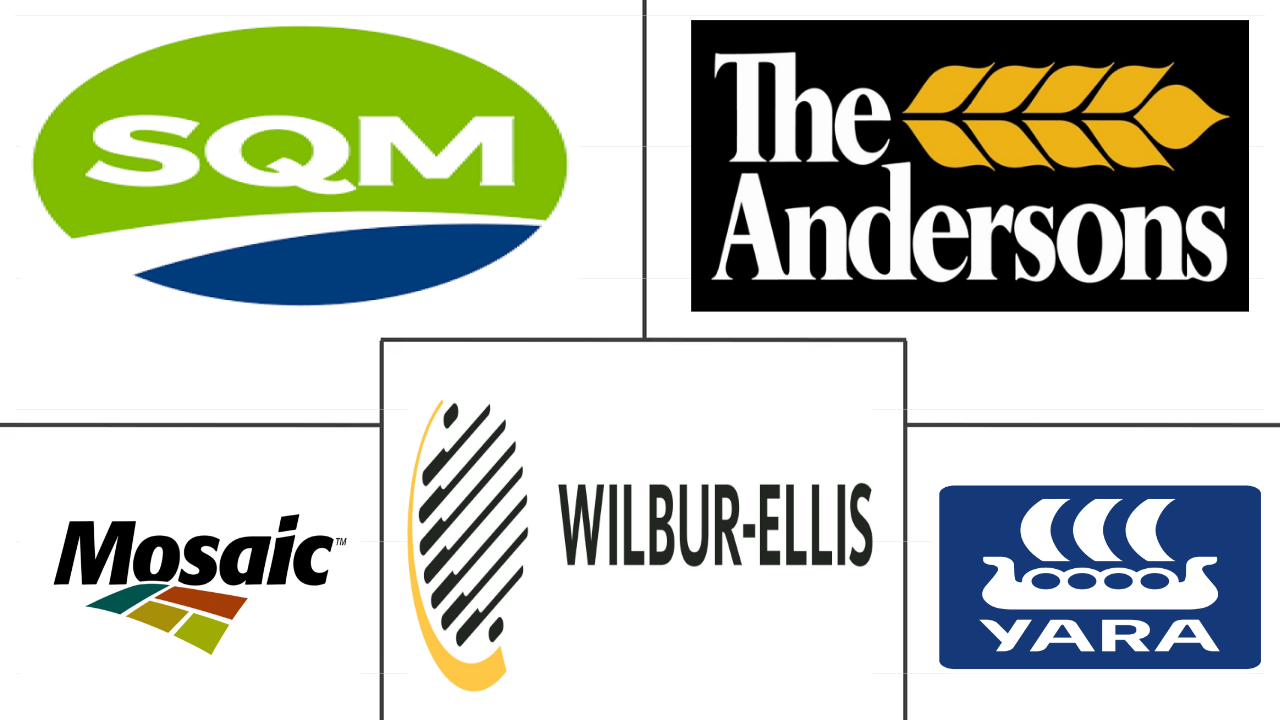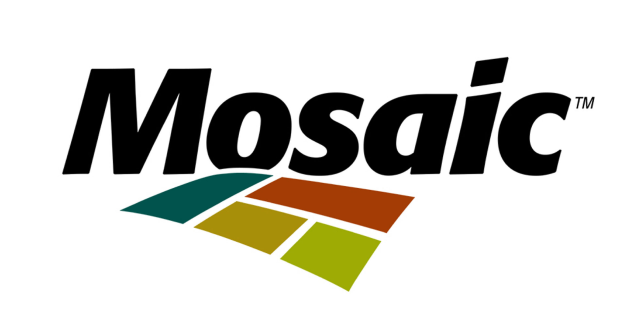Market Size of north america micronutrient fertilizer Industry
| Icons | Lable | Value |
|---|---|---|
|
|
Study Period | 2017 - 2030 |
|
|
Market Size (2024) | USD 1.4 Billion |
|
|
Market Size (2030) | USD 2.01 Billion |
|
|
Largest Share by Product | Zinc |
|
|
CAGR (2024 - 2030) | 6.31 % |
|
|
Largest Share by Country | United States |
|
|
Market Concentration | High |
Major Players |
||

|
||
|
*Disclaimer: Major Players sorted in no particular order |
North America Micronutrient Fertilizer Market Analysis
The North America Micronutrient Fertilizer Market size is estimated at 1.4 billion USD in 2024, and is expected to reach 2.01 billion USD by 2030, growing at a CAGR of 6.31% during the forecast period (2024-2030).
1.4 Billion
Market Size in 2024 (USD)
2.01 Billion
Market Size in 2030 (USD)
6.15 %
CAGR (2017-2023)
6.31 %
CAGR (2024-2030)
Largest Segment by Type
24.69 %
value share, Zinc, 2023
Agricultural experts have recognized that zinc deficiency in the Midwest and Great Plains regions of North America, is a significant challenge that can impact the crop yields.
Fastest Growing Type
7.52 %
Projected CAGR, Boron, 2024-2030
With the rising need to improve productivity and quality of the crops and address soil deficiency, the demand for boron is expected to significantly increase in the region.
Largest Segment by Crop Type
88.89 %
value share, Field Crops, 2023
The demand for micronutrient fertilizers is increasing in field crop cultivation to address soil nutrient deficiency which can significantly improve yields and quality.
Largest segment by Country
54.56 %
value share, United States, 2023
The growing awarenss of soil micronutrient deficiencies and their impact over crop health & yield among the farmers in the United States contributed to the market growth.
Leading Market Player
26.71 %
market share, The Mosaic Company, 2022

The Mosaic Co. has proprietary Fusion technology that packs all of the key micronutrients of MicroEssentials into a single granule making it leading market player.
Expansion of cultivation and the need for micronutrients to enhance quality and yield are anticipated to drive the demand for micronutrients
- Micronutrients are essential for plant growth. They play an important role in balanced crop nutrition. The lack of any of the micronutrients may limit plant growth. Micronutrient fertilizers contain elements like boron, copper, manganese, zinc, and cobalt. Plants require these substances in small quantities.
- By crop type, field crops recorded the highest value of USD 1.26 billion and a consumption volume of 399.2 thousand metric tons in 2022. Field crops accounted for about 88.7% of agricultural land in North America during the same period.
- The conventional micronutrient fertilizers segment accounted for 80.8% of the market share and was valued at USD 1.12 billion in 2022. It is anticipated to reach USD 1.57 billion by 2030. The specialty fertilizers segment accounted for 19.2% and was valued at USD 298.6 million in 2022. It is expected to reach USD 435.1 million by the end of 2030.
- In 2022, zinc accounted for 27.4% of the total micronutrient fertilizer market in North America and is the largest valued micronutrient. Zinc is a major component of plant enzyme systems. Zinc aids in the activation of various types of enzymes, boosting carbohydrate metabolism. Zinc deficiency is particularly common in Washington orchards, maize, and wheat, and it primarily causes stunted growth and little leaf disorder.
- Copper accounted for 17.5% of the North American micronutrient fertilizers market in 2022. Copper deficiency is becoming more widespread across Western Canada, limiting the growth of the crop and reducing yield potential because the natural stores of copper have been depleted by plants that take up copper in higher amounts. The copper fertilizer market is anticipated to witness a CAGR of 6.2% during 2023-2030.
The need to improve soil fertility and nutrient deficiency will fuel the growth of the market
- With nearly 98.8 million hectares of agricultural land, the United States dominates as North America's top agriculture producer. In 2022, the US commanded a significant 56.9% share of the North American market for micronutrient fertilizers.
- In 2022, crop cultivation in the US covered 139.7 million hectares, a 1% increase from the previous year. This expansion in cultivated areas has coincided with a growing reliance on micronutrient fertilizers, driven by escalating soil nutrient deficiencies.
- Canada, the second-largest agricultural landowner in North America, boasted around 30.9 million hectares. In 2022, Canada held a 14.2% share of the region's micronutrient fertilizer market. Over 88.0% of Canada's agricultural land is dedicated to crops, with notable concentrations in the Prairies, Quebec, and Southern Ontario.
- In 2022, Mexico emerged as a significant player in the micronutrient fertilizer market, capturing a 26.6% share in market value and 26.4% in volume. Field crops dominated Mexico's micronutrient fertilizer market, accounting for 69.2% of the total volume. Turf and ornamental crops followed at 16.1%, with horticultural crops making up the remaining 14.6%. Key field crops in Mexico include corn, sugarcane, and wheat.
- Other North American countries collectively contributed 2.4% to the total micronutrient fertilizer market value in 2022. Nations like the Dominican Republic, El Salvador, and Nicaragua, in this segment, rely on fertilizer imports and heavily depend on imported agricultural commodities.
- The North American micronutrient fertilizer market is on a steady growth trajectory and is projected to continue expanding in the coming years. This growth is driven by the increasing recognition of micronutrients' pivotal role in ensuring robust crop growth.
North America Micronutrient Fertilizer Industry Segmentation
Boron, Copper, Iron, Manganese, Molybdenum, Zinc, Others are covered as segments by Product. Fertigation, Foliar, Soil are covered as segments by Application Mode. Field Crops, Horticultural Crops, Turf & Ornamental are covered as segments by Crop Type. Canada, Mexico, United States are covered as segments by Country.
- Micronutrients are essential for plant growth. They play an important role in balanced crop nutrition. The lack of any of the micronutrients may limit plant growth. Micronutrient fertilizers contain elements like boron, copper, manganese, zinc, and cobalt. Plants require these substances in small quantities.
- By crop type, field crops recorded the highest value of USD 1.26 billion and a consumption volume of 399.2 thousand metric tons in 2022. Field crops accounted for about 88.7% of agricultural land in North America during the same period.
- The conventional micronutrient fertilizers segment accounted for 80.8% of the market share and was valued at USD 1.12 billion in 2022. It is anticipated to reach USD 1.57 billion by 2030. The specialty fertilizers segment accounted for 19.2% and was valued at USD 298.6 million in 2022. It is expected to reach USD 435.1 million by the end of 2030.
- In 2022, zinc accounted for 27.4% of the total micronutrient fertilizer market in North America and is the largest valued micronutrient. Zinc is a major component of plant enzyme systems. Zinc aids in the activation of various types of enzymes, boosting carbohydrate metabolism. Zinc deficiency is particularly common in Washington orchards, maize, and wheat, and it primarily causes stunted growth and little leaf disorder.
- Copper accounted for 17.5% of the North American micronutrient fertilizers market in 2022. Copper deficiency is becoming more widespread across Western Canada, limiting the growth of the crop and reducing yield potential because the natural stores of copper have been depleted by plants that take up copper in higher amounts. The copper fertilizer market is anticipated to witness a CAGR of 6.2% during 2023-2030.
| Product | |
| Boron | |
| Copper | |
| Iron | |
| Manganese | |
| Molybdenum | |
| Zinc | |
| Others |
| Application Mode | |
| Fertigation | |
| Foliar | |
| Soil |
| Crop Type | |
| Field Crops | |
| Horticultural Crops | |
| Turf & Ornamental |
| Country | |
| Canada | |
| Mexico | |
| United States | |
| Rest of North America |
North America Micronutrient Fertilizer Market Size Summary
The North American micronutrient fertilizer market is experiencing steady growth, driven by the increasing importance of micronutrients in crop nutrition. These fertilizers, containing essential elements like boron, copper, manganese, zinc, and cobalt, are crucial for optimal plant growth and preventing deficiencies that can limit agricultural productivity. The market is characterized by a significant focus on field crops, which dominate the agricultural landscape in the region. The United States, Canada, and Mexico are the primary contributors to this market, with the U.S. leading due to its vast agricultural land and crop cultivation areas. The demand for micronutrient fertilizers is further fueled by the recognition of soil nutrient deficiencies and the need to enhance crop yields in a competitive agricultural environment.
The market is fairly consolidated, with major players like Sociedad Quimica y Minera de Chile SA, The Andersons Inc., The Mosaic Company, Wilbur-Ellis Company LLC, and Yara International ASA holding significant shares. The conventional micronutrient fertilizers segment is the largest, reflecting the widespread adoption of these products in traditional farming practices. Specialty fertilizers also play a role, catering to specific crop needs and regional soil conditions. The market's growth is supported by strategic acquisitions and expansions by key companies, aiming to enhance their product offerings and market presence. As agricultural practices continue to evolve, the demand for micronutrient fertilizers is expected to rise, ensuring robust crop growth and addressing the challenges posed by soil nutrient deficiencies.
North America Micronutrient Fertilizer Market Size - Table of Contents
-
1. MARKET SEGMENTATION (includes market size in Value in USD and Volume, Forecasts up to 2030 and analysis of growth prospects)
-
1.1 Product
-
1.1.1 Boron
-
1.1.2 Copper
-
1.1.3 Iron
-
1.1.4 Manganese
-
1.1.5 Molybdenum
-
1.1.6 Zinc
-
1.1.7 Others
-
-
1.2 Application Mode
-
1.2.1 Fertigation
-
1.2.2 Foliar
-
1.2.3 Soil
-
-
1.3 Crop Type
-
1.3.1 Field Crops
-
1.3.2 Horticultural Crops
-
1.3.3 Turf & Ornamental
-
-
1.4 Country
-
1.4.1 Canada
-
1.4.2 Mexico
-
1.4.3 United States
-
1.4.4 Rest of North America
-
-
North America Micronutrient Fertilizer Market Size FAQs
How big is the North America Micronutrient Fertilizer Market?
The North America Micronutrient Fertilizer Market size is expected to reach USD 1.40 billion in 2024 and grow at a CAGR of 6.31% to reach USD 2.01 billion by 2030.
What is the current North America Micronutrient Fertilizer Market size?
In 2024, the North America Micronutrient Fertilizer Market size is expected to reach USD 1.40 billion.

